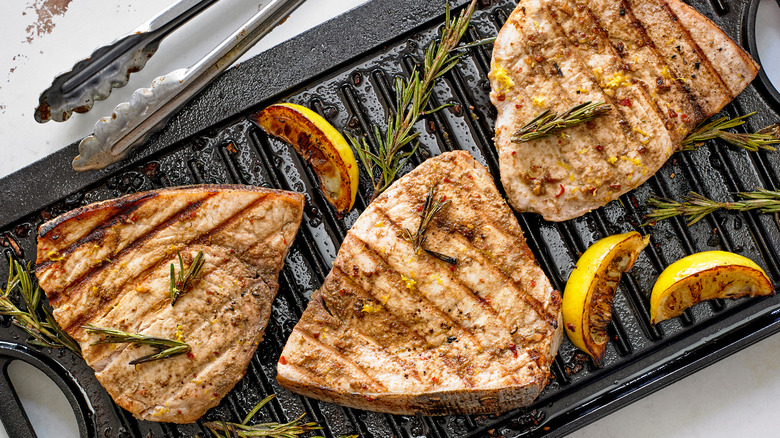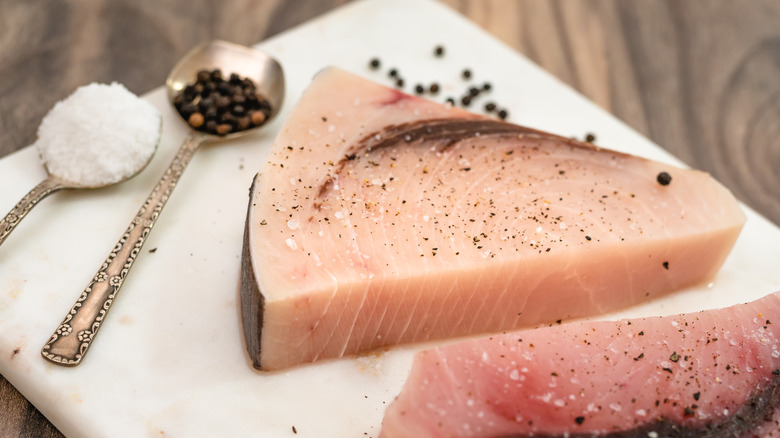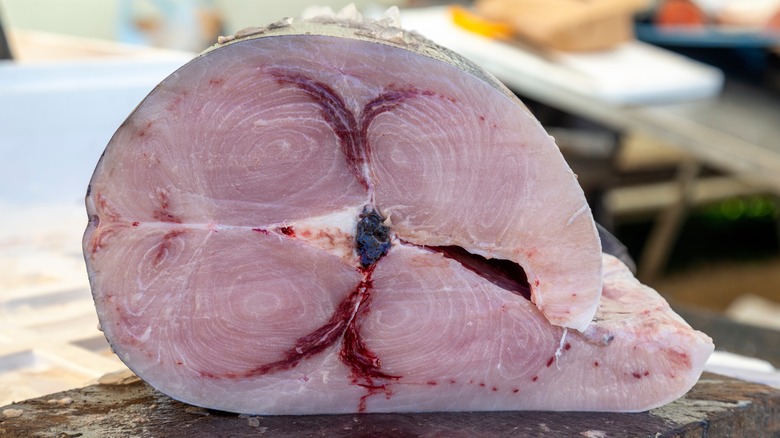How To Choose Swordfish Steaks For The Best Grilling Results
Ever since the titular elder in Ernest Hemingway's classic 1952 novella "The Old Man and the Sea" managed to reel in a massive marlin, folks have been obsessed with beautiful billfish, the only family of fish that comes equipped with their own fencing foils. While the titanic trophy fish was once dangerously overharvested, a series of regulations imposed since 1985 have restored the population and guaranteed the North Atlantic swordfish is no longer overfished. As such, it represents a great source of sustainable seafood.
At first glance, the idea of slicing off a swordfish filet seems akin to extracting delectable uni meat from within the formidable spines of a sea urchin. But despite its intimidating name, swordfish is an incredibly mild, firm-textured white fish that holds up well on the grill. A thick-cut swordfish filet is the perfect steak substitute, and can even please the palates of those of your guests who usually avoid seafood.
Making sure your swordfish steak is the perfect size
When ordering fish at a restaurant, the precise dimensions of your portion are preset, but if you're strolling down the seafood aisle, you may be confronted with a stack of swordfish steaks in varying sizes. In order to ensure a flavorful filet, you will need to find one that is sufficiently thick — a one-inch-thick swordfish steak has enough mass to withstand a solid sear.
"Steak" is obviously a broad term, but generally speaking, a thicker steak is preferable to a thinner cut. This is because steaks are cooked by searing them on both sides, so thinner slices overcook in the center before a nice char can develop. Thickness is even more imperative when choosing seafood steaks. A thin swordfish steak might crumble before you can finish cooking it. Furthermore, swordfish can be eaten raw, and it gets incredibly dry when overcooked. A thick cut allows the steak to maintain an ideal internal temperature of around 130 to 135 degrees Fahrenheit.
Other considerations when choosing swordfish steak
Aside from thickness, arguably the most important consideration when buying swordfish steaks should be the cut's color. Swordfish has a subtle off-white hue, which seems to gel with its mild flavor profile. However, much like the marbling in a beef steak, swordfish has streaks of red coursing through it, which have a funkier flavor than the rest of the fish. These red streaks should be configured in a tightly-packed swirl, and if they've begun to take on a brownish hue, it's a sign that the swordfish has gone bad.
Furthermore, you need to consider whether or not you want to choose a swordfish steak that still has its skin attached. Some fish skin is edible, and it can even be an excellent source of nutrients. Swordfish skin, on the other hand, remains tough whether it's been cooked or not. Swordfish can be cooked with the skin intact, but it will leak fishy flavor into your steak.


